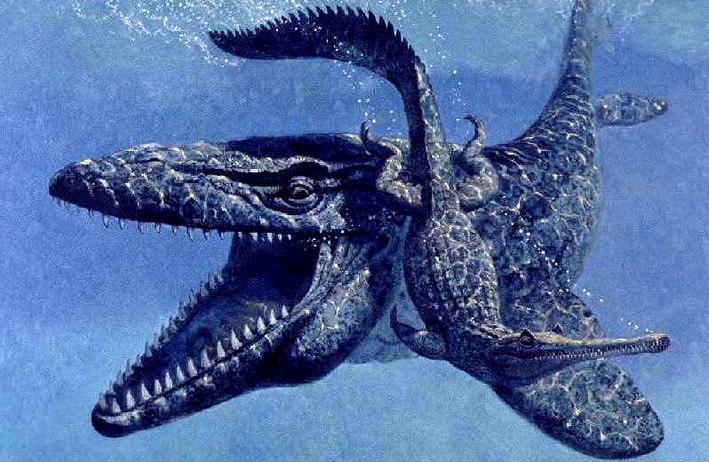 |
| Ammonite |
 |
| Let's hope our friend didn't fall prey to this Mosasaur |
The shell of our Ammonite friend settled in a clam bed of a shallow marine sea. Over millions of years, sedimentary layers were laid down upon him. Collision of the oceanic and north American continental plates caused the region to inch its way 1500 miles north, one earthquake jolt at a time. It also caused the seabed to fold into a U-shape, tilt, and uplift forming Sucia island, which geologists call a classic example of a "plunging marine syncline". Wind and wave erosion has continually eaten away Sucia's shoreline exposing the fossils buried there.
Including that of our Ammonite friend, the shape of which seems oddly familiar.
 |
| The fossilized remains of an Ammonite |
 |
| Fossils riddle the cliff face |
After my early morning fossil expedition it was time for Tim and I to explore Patos Island. I've been to the San Juans many times, but I've never been to Patos. Sailing to, and exploring a place for the first time is something we enjoy immensely.
The seas were like glass, so we had to motor the 6 miles from Sucia's Fossil Bay to Active Cove on Patos.
We had some difficulty setting anchor in Active cove. The bay is rocky and full of dense seaweed. After several attempts we were able to find a small patch of sand and drop the anchor on it.
Patos is a beautiful island. The campsites at Active Cove have stunning, sweeping views of Boundary Pass. I was always under the impression that Patos was a wild, undeveloped place, so I was quite surprised to find a sidewalk leading from the Cove to the lighthouse. Tim and I walked out to the Patos lighthouse, which is similar, but larger than our Mukilteo lighthouse. We bought some souvenirs. Tim got a coffee mug with nice photos of the lighthouse and I bought the 50th anniversary of the book The Light on the Island.
We returned to Ellie and continued our circumnavigaton of Patos. We spotted about 30 seals on the rocky beaches on the North East point of the island.
Time to head back to Fossil Bay. We didn't want to miss out on the traditional "Wine and Cheese" night.
Good times!






